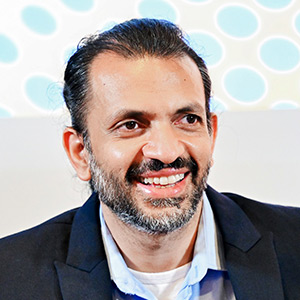As the off-grid solar sector grows in impact and scale, more attention is being placed on the lifecycle of solar products and the need to advance the sector’s performance on e-waste management. In July 2019, the GSMA attended GOGLA‘s ‘E-waste Festival’ in Nairobi, an event designed to bring the off-grid solar industry together to create new ideas, partnerships and projects related to e-waste. Over 50 attendees took part in the three day event, representing mainstream solar manufacturers, off-grid solar manufacturers, recycling centres, formal repair/collection owners, informal handlers and associations, consultancies that assist in e-waste management, and academic institutions.
The first day of the festival was kicked off with a short message from Esther Wachira of Swedfund, Greyson Metili from Mobisol Tanzania (co-chair of the e-waste Working Group) and Drew Corbyn, Programme Manager for Quality and Consumer Protection at GOGLA. Group discussions and sharing sessions also provided opportunities for participants to identify the most common types of e-waste and highlight examples of best practice on e-waste management (i.e. repair and reuse, recycle, or discard in a safe manner). Groups also shared insights on the key challenges that exist in the Off-Grid Solar (OGS) waste management ecosystem, and then translated these into opportunity areas. It was great learn that mobile phones are one type of e-waste that can be fully recycled, and to hear consensus that digital platforms could be used to facilitate partnerships and collaboration among OGS players.
Day two began with the closed-door session for members of GOGLA and KeREA. During this session the participants looked at the content of the draft e-waste bill and policy in Kenya, which was brought forward by NEMA (National Environment Management Authority). An industry response to the bill was discussed and will form the basis for future engagement with policy makers. Although the conversation was very specific to the OGS ecosystem, it was good to see similarities to the m-waste ecosystem. The key points in the policy position were:
- NEMA’s efforts to be fair across all organisations (to ensure larger organisations don’t get a competitive advantage);
- National Steering committee to have fair representation from the OGS industry;
- Collecting centres to be set up based on proximity to specific collection activities (especially in rural areas);
- Ensure the cost of collection is fairly allocated between rural vs urban e-waste (as there would be more e-waste in urban settings);
- Legal framework to be considerate towards the products brought into the market recently; and
- Legal framework should allow producers to have the flexibility to comply rather than being too prescriptive.
In the afternoon, we heard the eight Global LEAP winners describe the projects they will be implementing over the next year. The Global LEAP Solar E-Waste Challenge has made US $1 million in grant funding available to companies with innovative approaches to e-waste management in the off-grid solar sector in Sub-Saharan Africa.
On the third and final day of the festival, participants visited the WEEE centre – one of the Global LEAP Awards winders – to get a first-hand view of the practicalities of e-waste handling and treatment. During the visit we were able to see:
- The location where all the E-waste items and brought and sorted; depending on the day and quantity of e-waste they have, they would decide which type to classify:
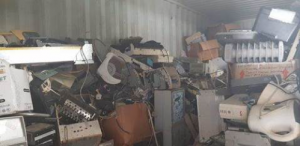
- How the e-waste is categorised and removed into parts:
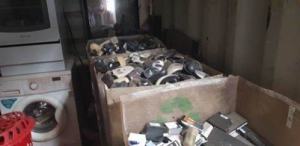
- How Lithium Cadmium batteries brought to the centre are ‘re-wired’. The battery is essentially disassembled down to a compact cell (which is being held in the picture below), which can be used to power a household with five lights for eight hours, or a TV for eight hours. The battery cell is given a serviceable warranty for two years:
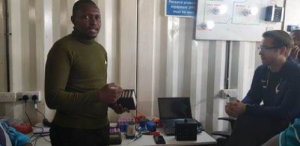
- Finally, the Cathode Ray Tube (CRT) monitors are cut, gas is released, and all of the components are separated:
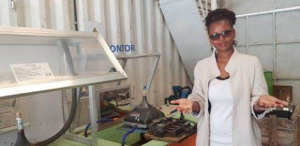
The three-day festival provided many insights on the e-waste management ecosystem of Sub-Saharan Africa, focusing mainly on end of life management for Off Grid Solar E-waste. E-waste management will be a key focus area for GSMA’s CleanTech programme, and efforts to improve the management of mobile waste will be actively encouraged by GOGLA and other important stakeholders. For a full summary of the E-Waste Festival, visit GOGLA’s website.



